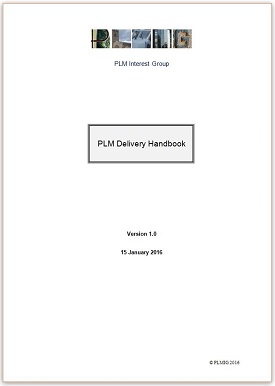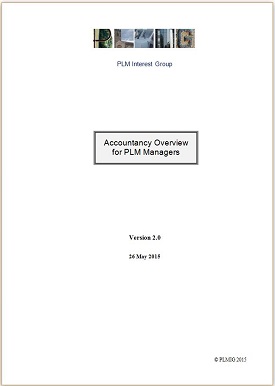|
PLM Interest Group |
||||||||||||||||||||||||||||
|
|
|
|
||||||||||||||||||||||||||
|
|
|
||||||||||||||||||||||||||
|
|
|
|
||||||||||||||||||||||||||
|
Financial Competence in PLM
It is not true that PLM is somehow "unquantifiable". You can calibrate PLM in detailed financial terms, and integrate PLM with the financial performance of your business.
The PLMIG can provide the toolsets and the guidance to enable you to reach this level of financial control. A corporate PLM spend can run into millions of dollars. Everyone will gain if it can clearly be shown that the spend is worthwhile. |
|||||||||||||||||||||||||||
|
Tools and Methods
Once the general principles are understood, the rest comes down to determination, because doing the calculations requires effort; and discipline, to keep following the methodology. The PLMIG provides 3 main tools to guide you through the process:-
|
|||||||||||||||||||||||||||
|
PLM Justification
The PLM Justification Handbook contains a standard, neutral methodology to quantifiy the costs, benefits and commercial value of implementing PLM.
Take the "leap of faith" out of proposals for PLM enhancements by quantifying the full benefits and rate of return. |
|||||||||||||||||||||||||||
|
PLM Delivery
The PLM Delivery Handbook enables users and their suppliers (vendors, systems integrators or consultancies) to work together to define target benefits for PLM adoption. This takes Justification to a new level, enabling vendors and advisors to collaborate in the process and commit to achieving the results.
The fact that both user and vendor have calculated the target benefits, and feel confident to endorse them in writing, is a major boost to gaining approval. |
|||||||||||||||||||||||||||
|
Financial Understanding
If you want to produce a solid financial justification for your PLM projects then you will need to work with the accountants in the Finance Department. Only they know the figures that you need for the calculations.
When you can talk to them on this level, and involve them in the process of quantifying the financial effects of the PLM benefits, they take on ownership of the figures and are motivated to support them. For the first time, your Finance Department colleagues will no longer be "obstacles to be persuaded", but will be on board and supporting you. |
|||||||||||||||||||||||||||
|
Monetizing PLM
Whether you prefer 'Monetize' or 'Monetise', the effect is the same - to gain such complete control of your PLM financial benefits that the Board asks for more PLM projects to help achieve the company's business aims. It just takes the will to move PLM up to a more advanced level, following the methodology. By developing the depth of PLM financial management, and integrating with the ongoing accounts of the business, PLM targets and results become visible. PLM is no longer a "hidden asset", but part of mainstream business management. This enables you to look at PLM in purely strategic terms, not just for product management but from a pure, high-level business point of view. The Board looks at how the corporation is structured; how the various divisions relate to each other and to the market; the future position the business is aiming for; and what needs to be done to enable this. When you have monetized your PLM, you can reshape it to meet the Board's vision of the business future.
|
|||||||||||||||||||||||||||
|
Getting Started
Thinking about PLM in purely financial terms requires a completely new mindset. The initial drivers to implement PLM are obviously related to the product and the lifecycle, but focusing on financial outturns provides new insights and opportunities. Applying these toolsets will enable you to reorient your implementation onto a proper financial footing, and take advantage of the performance benefits that this brings. This is the level of financial management and control that every implementation should achieve. The toolsets can be purchased directly from the Store. The toolsets are also part of the full set of PLMIG material provided by PLMIG Membership. When you have reached this level, you can then go on to Monetize Your PLM. Find Out More
For more information contact financialplm@plmig.com. © Copyright 2025 PLM Interest Group |
|||||||||||||||||||||||||||
| <<< Return Home | ||||||||||||||||||||||||||||
|
|
|
|
||||||||||||||||||||||||||
|
|
||||||||||||||||||||||||||||








